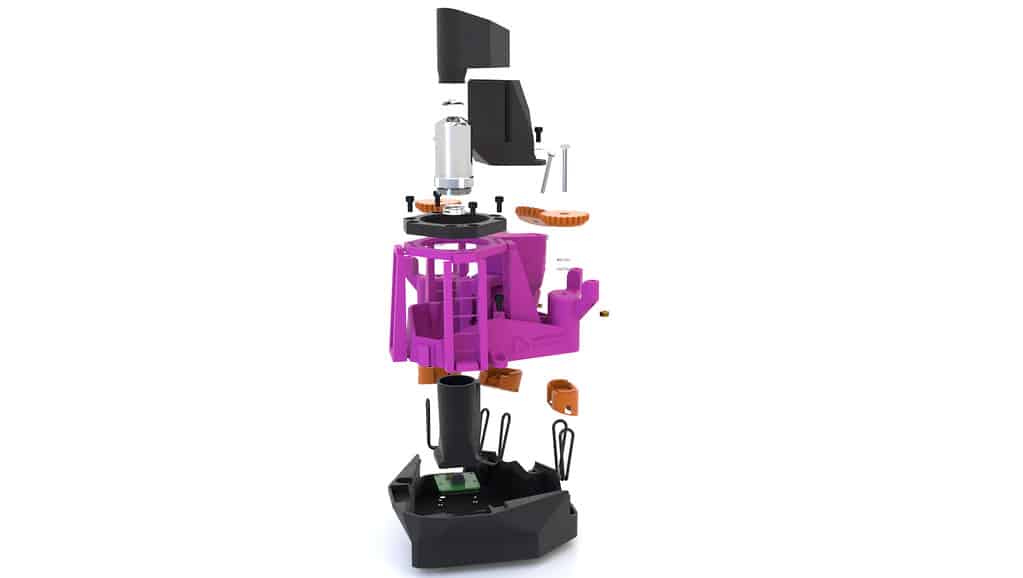A team of researchers at the University of Bath in the United Kingdom has developed an open-source design for a 3D printable “laboratory” microscope at a price of only $ 18.
The OpenFlexure microscope is a fully automated device with motorized sample positioning, focus control, and precise mechanical stage.
In addition to being easy to use, the microscope is also designed to be more affordable than commercial microscopes. Its open-source 3D printable design gives laboratories around the world the opportunity to 3D print their own precision microscopes, thus equipping them with tools for analyzing samples and detecting diseases.
Dr. Joel Collins, co-creator of the microscope and physics researchers at the University of Bath, explained: “We want to use these microscopes all over the world-in schools, research laboratories, clinics, and people’s homes if they want microscopes just Come play. You need to be able to pick it up and use it immediately. You also need an affordable price. ”

Development of easy-to-use 3D printable microscope
The OpenFlexure project aims to increase the accessibility of high-precision mechanical positioning for personnel equipped with 3D printers (for microscopes, micromanipulators, etc.).
It was originally founded by Dr. Richard Bowman in 2015 and is currently a professor in the Department of Bath Physics. The project is now developed and maintained by BOING (Bath Open Instruments Group). The development of the microscope also involves the cooperation of STICLab, Ifakara Health Research Institute, WaterScope and Cambridge University.
In order to ensure that the 3D printed microscope can be used by most people, the researchers ensure that its cost is kept at a low level, whether it is upfront costs or equipment maintenance costs. Commercial microscopes intended for laboratory use can be sold for tens of thousands of pounds, while OpenFlexure microscopes are priced at 15 pounds (18 dollars). This price includes the cost of printed plastics, cameras and some fixed hardware.
However, despite the low price and the use of 3D printed structures, the development of microscopes still focuses on ensuring their ability to produce high-quality images. It is equipped with a software interface and a simple alignment function to simplify the use process to the greatest extent, and can also be customized. This means that OpenFlexure can be suitable for laboratory, school and home use.
In fact, the researchers explained that in Tanzania and Kenya, more than 100 OpenFlexure microscopes have been 3D printed. Such a feat demonstrates the potential of using 3D printing and open source to design and manufacture and adapt to complex hardware used in other regions. These hardware have been designed and manufactured in a certain region of the world. Dr. Richard Bowman explained: “Our Tanzania partner STICLab has modified the design to better suit its local market, which proves another key advantage of open source hardware-customization, The ability to improve and acquire products. ”
Development of accessible optical instruments through 3D printing
This is not the first time that 3D printing has been used to produce low-cost optical instruments to improve their accessibility.
The Optical Society (OSA) published a study in 2019 detailing 3D printable high-resolution digital holographic microscope (DHM) microscopes. To produce a portable, powerful and cost-effective microscope, American researchers 3D printed the device to diagnose malaria, sickle cell disease, diabetes and other diseases.
Bahram Javidi, head of the research team at the University of Connecticut, said that the instrument is made entirely of 3D printed components and common optical components. It has a simple structure and low cost, which can “increased access to low-cost medical diagnostic tests.
Scientists at RMIT University have also developed 3D printed “clip-on” filters that can turn smartphone cameras into powerful microscopes. With the ability to analyze specimens as small as 1/200 mm, the device can be used as an instant diagnostic tool for telemedicine clinics and field research teams.

